Did you know that the oldest candle can be traced back thousands of years? It’s a fascinating fact!
In fact, the origins of candle making can be traced back to ancient civilizations. Throughout history, different cultures and civilizations have made significant contributions to the development of candles as we know them today.
From the ancient Mesopotamians to the Egyptians and Romans, each society added their own unique touch to this illuminating invention.
Over time, modern manufacturing techniques and advancements in candle wax and wick have further revolutionized the way candles are made and used.
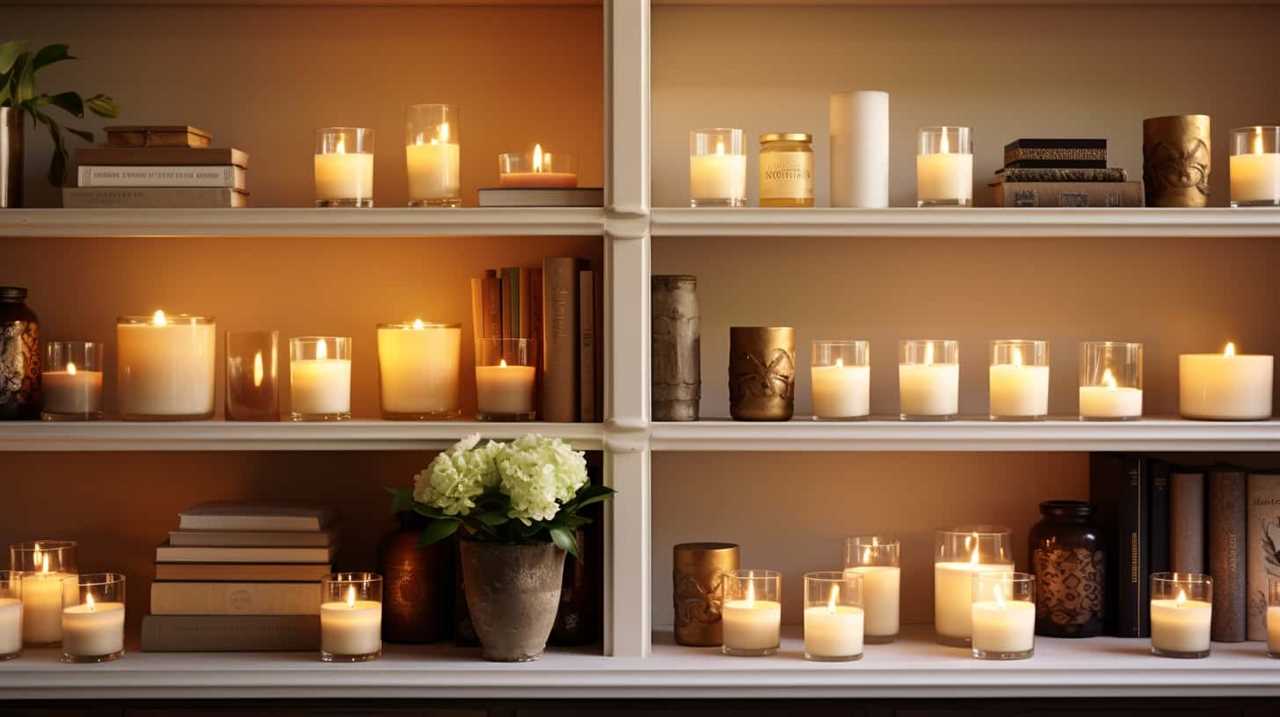
Join us as we delve into the fascinating journey of the first candle inventor and the lasting legacy they left behind.
Key Takeaways
- Candle making can be traced back to ancient civilizations such as the Mesopotamians, Egyptians, and Romans.
- Early candle making techniques involved using materials like animal fats, beeswax, and plant oils, with wicks made from linen or papyrus.
- The first candle inventor left a lasting legacy in the evolution of candle making.
- Different materials like beeswax, tallow, bayberry wax, whale oil, and stearin have played a role in the evolution of candle materials.
The Origins of Candle Making
We learned about the origins of candle making through a deep dive into historical records and archaeological evidence.
Early candle making techniques can be traced back to ancient civilizations such as the Egyptians, Romans, and Greeks. These civilizations used a variety of materials to create candles, including animal fats, beeswax, and tallow.
In ancient Egypt, they developed a technique using rush stems soaked in animal fat as a wick.
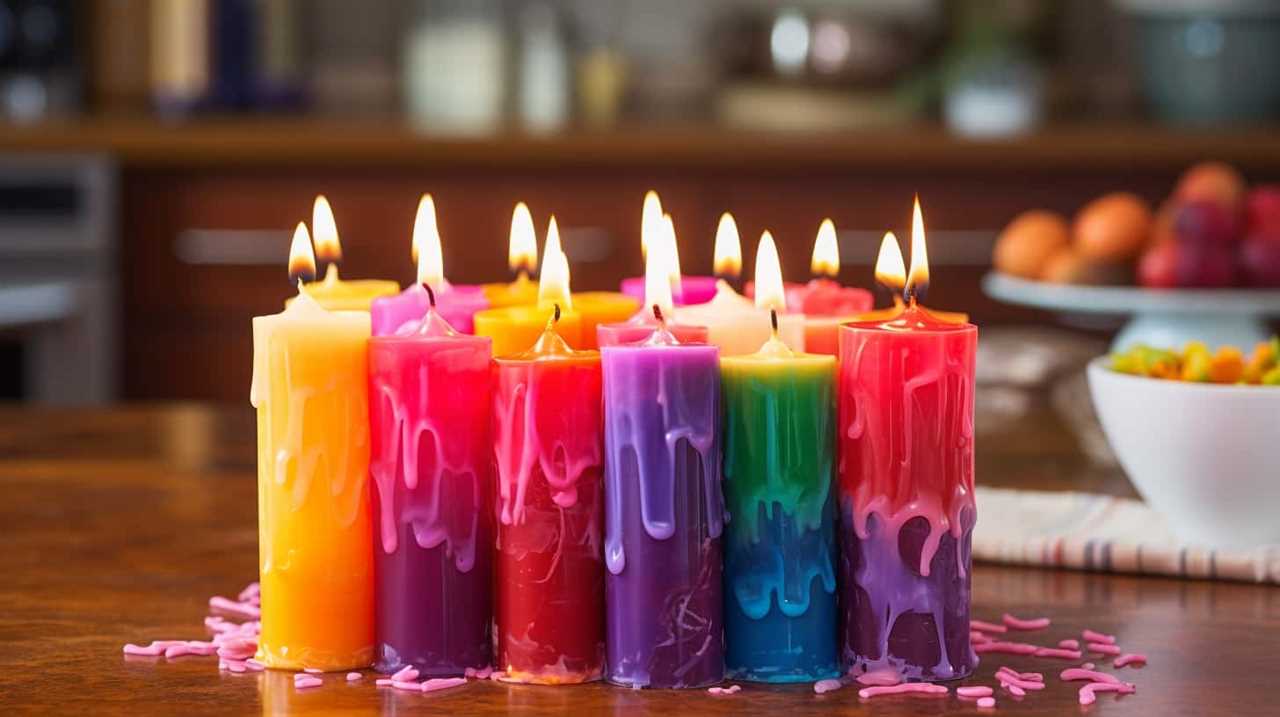
The Romans used tallow and beeswax to create candles of varying sizes and shapes.
The Greeks were known for their use of olive oil as a candle material.
These early candle making techniques laid the foundation for the evolution of candle making throughout history, leading to the diverse range of candles we’ve today.
Early Candle Materials and Techniques
When it comes to early candle materials, ancient civilizations used a variety of substances such as animal fats, beeswax, and vegetable oils. These materials were often combined with wicks made from reeds or papyrus.
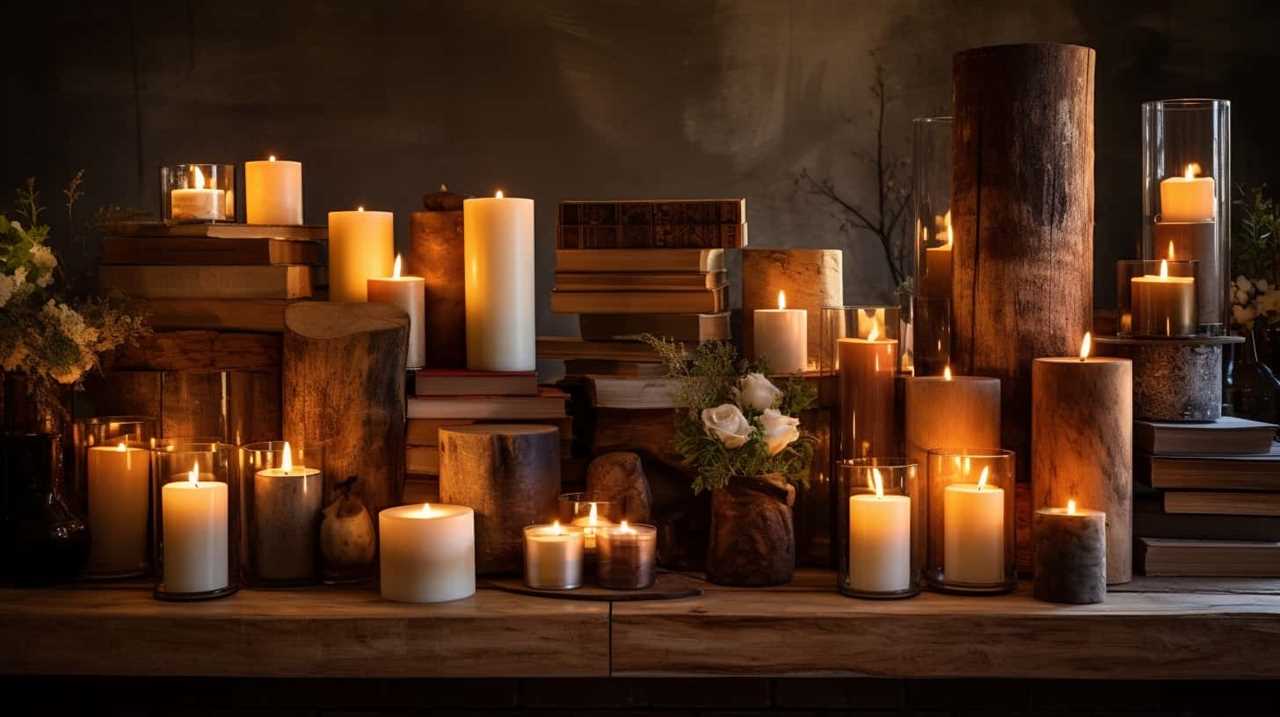
Candle-making techniques during this time included dipping the wick into melted wax or pouring the wax into molds.
Over time, candle materials evolved, with the introduction of tallow and the development of more advanced techniques such as rolling and molding.
Ancient Candle Materials
Historical records reveal that early civilizations utilized various materials and techniques to create candles. In ancient candle making, early candle techniques were diverse and varied depending on the region and resources available.
Some of the earliest materials used for candle production included natural resources such as animal fats, beeswax, and plant oils. Animal fats, such as tallow, were readily available and commonly used in many societies. Beeswax, on the other hand, was a more expensive and luxurious option, often reserved for religious ceremonies or the wealthy. Plant oils, such as olive oil, were also used in certain regions.
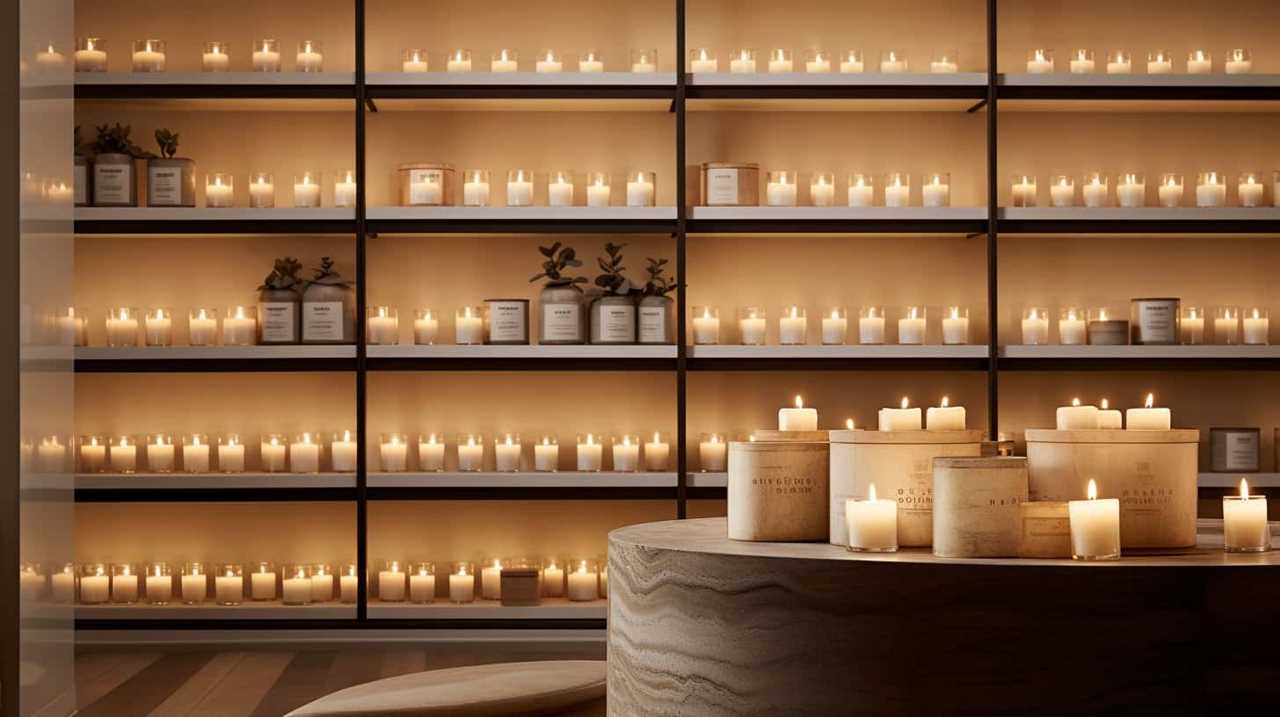
These materials were combined with wicks made from materials like twisted linen or papyrus. The candles were typically made by dipping the wick repeatedly into the melted material until the desired thickness was achieved.
These ancient candle materials and techniques laid the foundation for the development of candles throughout history.
Candle-Making Techniques
Early civilizations utilized various materials and techniques to create candles. This included animal fats, beeswax, plant oils, and wicks made from materials like twisted linen or papyrus. Ancient candle-making techniques involved melting the chosen material and pouring it into a mold or dipping a wick into the melted substance.
Animal fats, such as tallow, were commonly used due to their availability and low cost. Beeswax, on the other hand, was a more expensive option, but it produced candles with a pleasant scent and a cleaner burn. Plant oils, like olive oil, were also used to create candles, especially in regions where animal fats or beeswax were scarce.
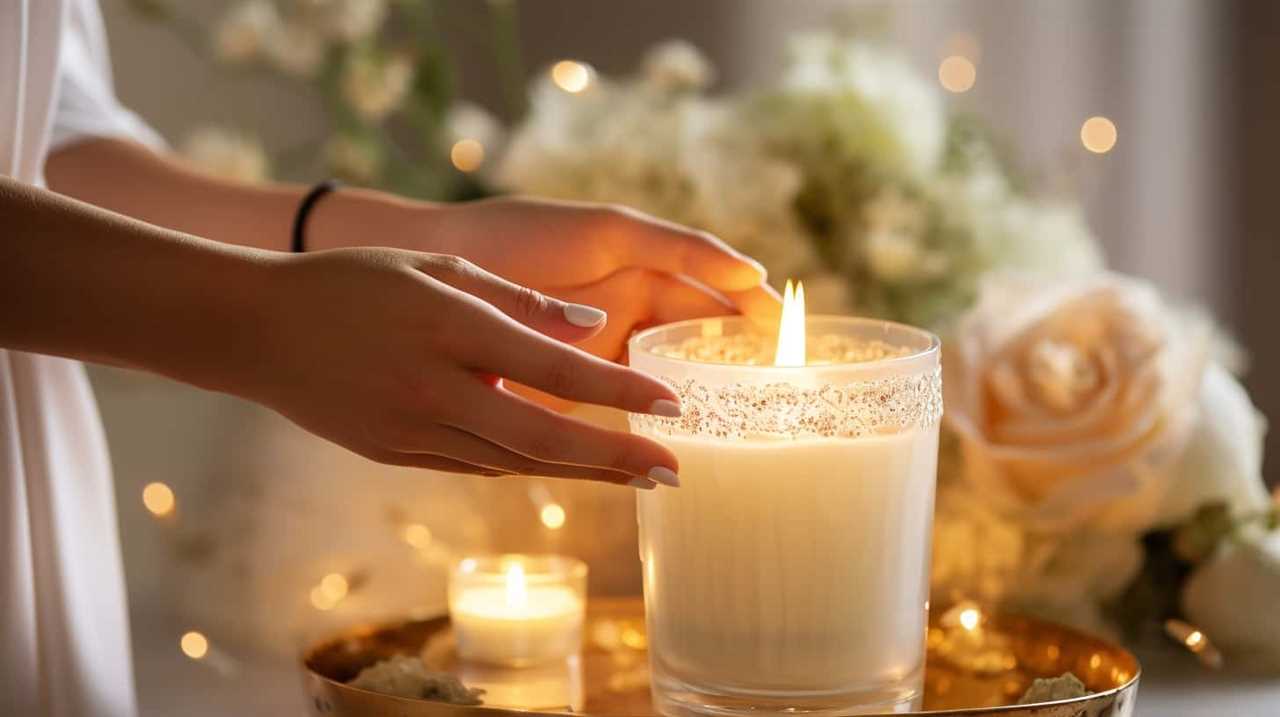
These early candle-making techniques laid the foundation for the development of more advanced methods in later centuries.
Evolution of Candle Materials
Throughout history, humans have experimented with various materials and techniques in the evolution of candle-making. The advancement of candle materials has come a long way since the first primitive candles made from animal fats and reeds.
Here are some notable materials and techniques that have played a role in this evolution:
- Beeswax: This natural wax, produced by bees, has been used since ancient times and is known for its clean burning and pleasant aroma.
- Tallow: Rendered animal fat, such as beef or mutton tallow, was commonly used in early candles due to its availability and affordability.
- Bayberry Wax: Derived from the waxy coating of bayberries, this material was used by early American settlers and is known for its unique scent.
- Whale Oil: Extracted from the blubber of whales, this oil was used for candle-making during the 18th and 19th centuries.
- Stearin: A derivative of animal fat, stearin was introduced in the 19th century and improved the burning characteristics of candles.
These advancements in candle materials have paved the way for the diverse range of candles we have today.
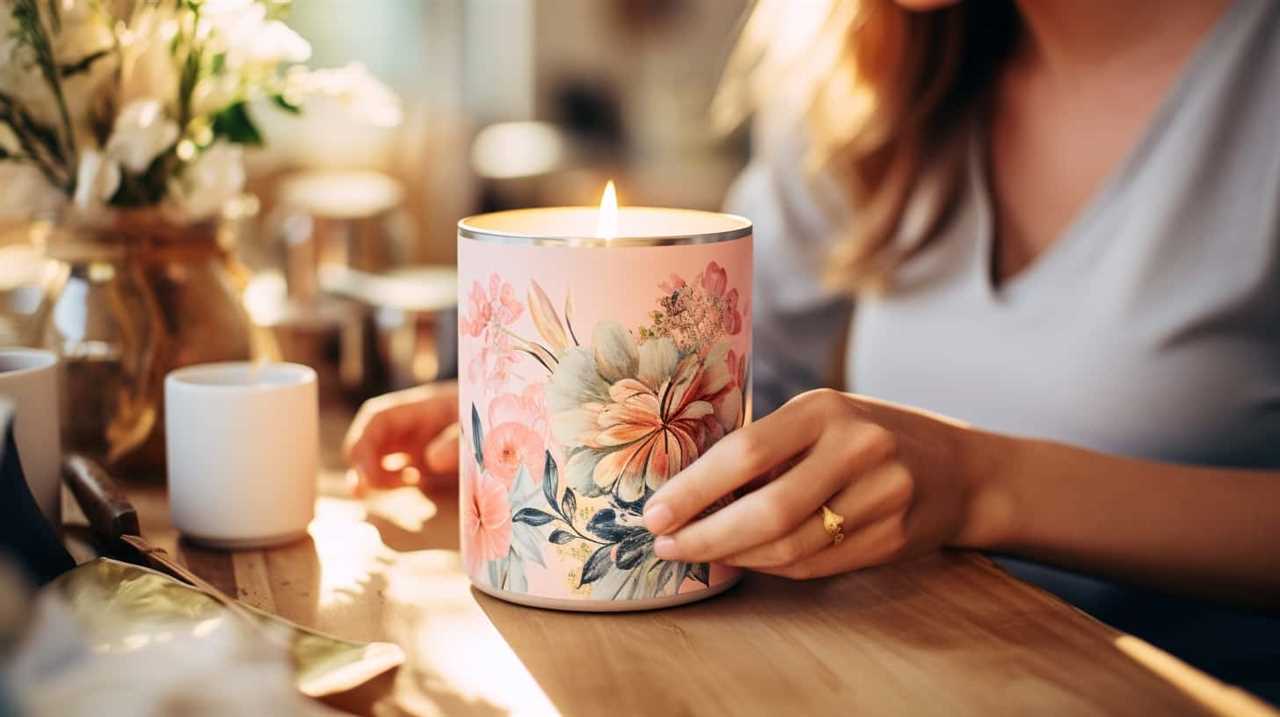
Ancient Mesopotamian Contributions
In our exploration of the invention of the first candle, we must acknowledge the significant contributions made by the ancient Mesopotamians.
The Mesopotamians were pioneers in candle making and made several important inventions in this field. They developed ancient candle making techniques that laid the foundation for the candles we use today. One of their key inventions was the use of tallow, a type of animal fat, as a fuel source for candles.
The Mesopotamians also created the first wick, which was made from reeds or papyrus soaked in tallow. These advancements allowed for a more controlled and sustained flame, making the candle a practical and reliable source of light.
The ancient Mesopotamians’ innovations in candle making techniques paved the way for the development of candles throughout history.
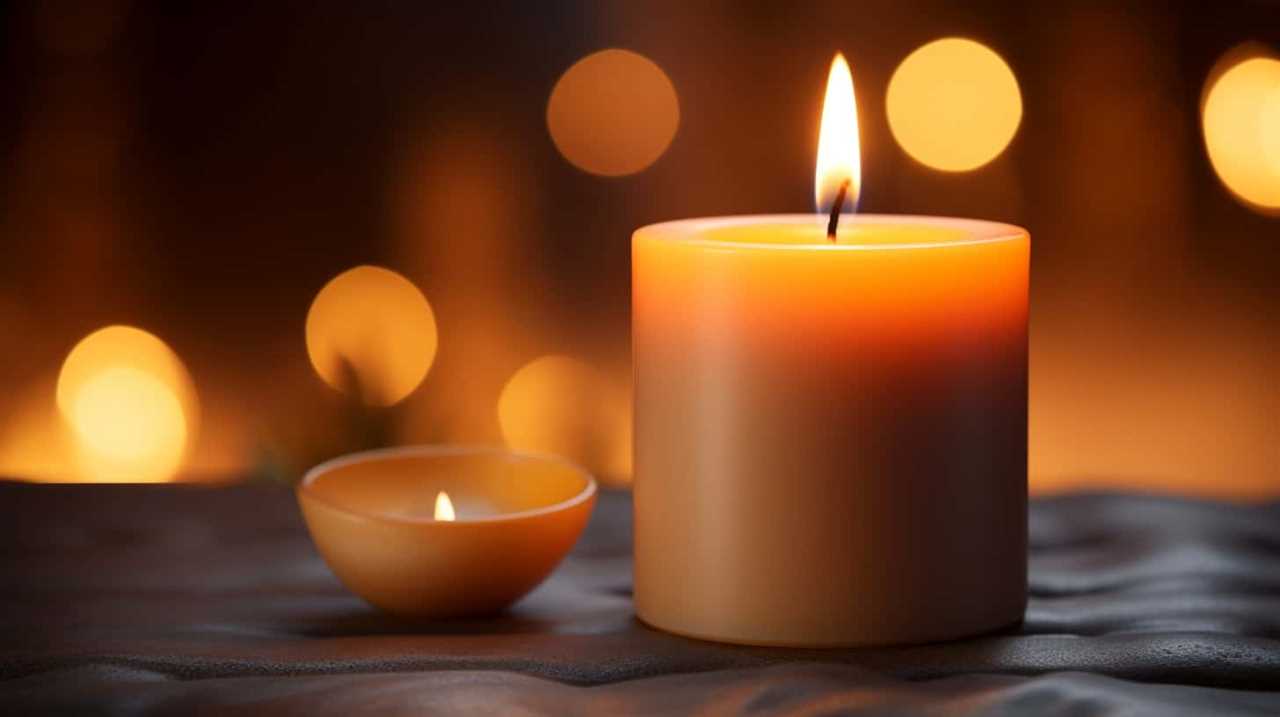
Ancient Egyptian Candle Innovations
Ancient Egyptian candle innovations encompassed the materials and sources used to create candles, as well as the symbolism and significance attributed to them. Egyptians utilized various materials such as beeswax, tallow, and animal fats to make their candles, which were derived from natural resources abundantly available in the region.
These candles held great importance in Egyptian rituals and religious ceremonies, serving as a symbol of light, purification, and connection to the divine.
Candle Materials and Sources
We discovered several fascinating candle materials and sources during our research, including those used by the innovative ancient Egyptians. In ancient Egypt, candle making techniques were highly advanced, utilizing a variety of materials and symbolism. Some of the materials used by the Egyptians included:
- Beeswax: Beeswax was a popular material for candle making due to its natural fragrance and slow, clean burn.
- Tallow: Tallow, derived from animal fat, was another commonly used material for candle production.
- Rushes: Egyptians also used rushes, which were soaked in animal fat or vegetable oil, as makeshift candle wicks.
- Clay lamps: Clay lamps were another source of light in ancient Egypt, often filled with oil and fitted with a wick for illumination.
- Reeds: Reeds were used as both wicks and candles, with the pithy core acting as the fuel source.
These materials and sources demonstrate the ingenuity and resourcefulness of ancient Egyptian candle makers.

Candle Symbolism and Significance
Exploring the significance of ancient Egyptian candle innovations, we delve into the symbolism and cultural importance attached to these early forms of illumination. Candles held great symbolic meaning in ancient Egyptian culture, representing light, life, and spirituality. They were commonly used in religious rituals and ceremonies, serving as a link between the mortal world and the divine realm. The flickering flame of the candle was believed to symbolize the eternal soul and its connection to the gods. Candles were also used to honor the deceased during funerary rites, guiding their souls to the afterlife. The cultural significance of candles in ancient Egypt can be seen in the elaborate candle holders and intricate designs that adorned them. These innovations demonstrate the importance and reverence placed on candle symbolism in Egyptian society.
| Symbolism | Cultural Significance | Innovation |
|---|---|---|
| Light | Illumination and enlightenment | Elaborate candle holders |
| Life | Connection to the eternal soul | Intricate designs |
| Spirituality | Link between mortals and gods | Sacred use in rituals and ceremonies |
| Death | Guiding souls to the afterlife | Incorporation in funerary rites |
| Divinity | Representation of the gods | Usage in religious practices |
Roman Candle Development
The Roman’s development of the candle involved experimenting with different wax blends and wick materials. They were pioneers in Roman candle technology and design, continuously refining their creations.
Here are some key aspects of their innovation:
- Wax blend variety: Romans tested different combinations of beeswax, tallow, and vegetable waxes to find the optimal formula for their candles.
- Wick materials: They explored various materials like cotton, flax, and papyrus to achieve the desired burn rate and brightness.
- Shape and size: Romans designed candles in different shapes and sizes, ranging from cylindrical to conical, to suit different purposes and occasions.
- Scented candles: They added aromatic oils, such as lavender and cinnamon, to enhance the sensory experience.
- Decorative elements: Romans adorned their candles with colorful dyes and intricate carvings to create visually appealing displays.
The Roman’s dedication to candle development laid the foundation for the candles we use today.
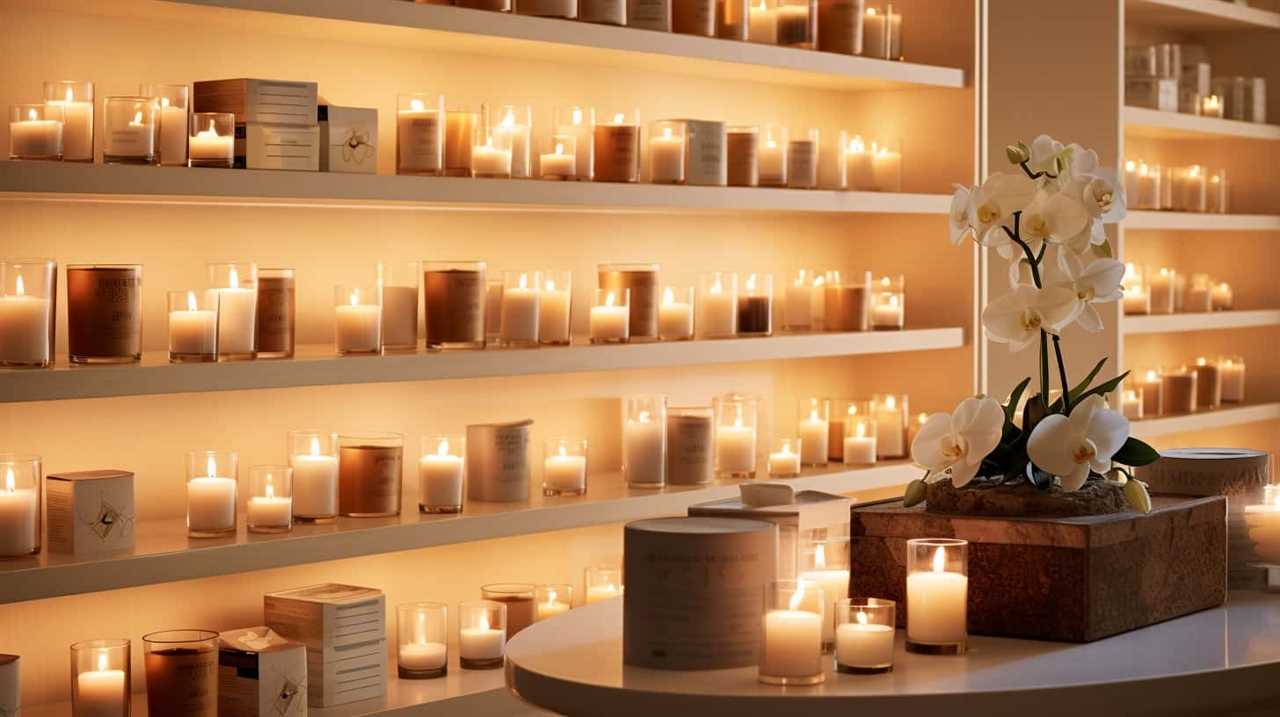
Medieval Candle Production
Continuing our exploration of candle development, medieval candle production saw advancements in techniques and materials. During the medieval period, candles were primarily made from tallow, which is rendered animal fat. However, beeswax candles were also produced, although they were more expensive and reserved for religious ceremonies.
Medieval candle making techniques involved dipping a wick in melted tallow repeatedly to build up layers of wax, creating a cylindrical shape. This process required skill and precision to ensure the candle burned evenly and efficiently.
The historical significance of medieval candles lies in their practicality and widespread use. Candles provided essential light in homes, churches, and other spaces, allowing people to carry out their daily activities even after sunset. Additionally, candles played a crucial role in religious rituals and ceremonies, symbolizing spiritual enlightenment and divine presence.
Asian Candle Traditions
During this period, we discovered that Asian candle traditions also played a significant role in the development of candle making techniques and materials. Asian candlemaking techniques have been passed down through generations and have become an integral part of various cultures. The cultural significance of candles in Asia can be seen in the following ways:
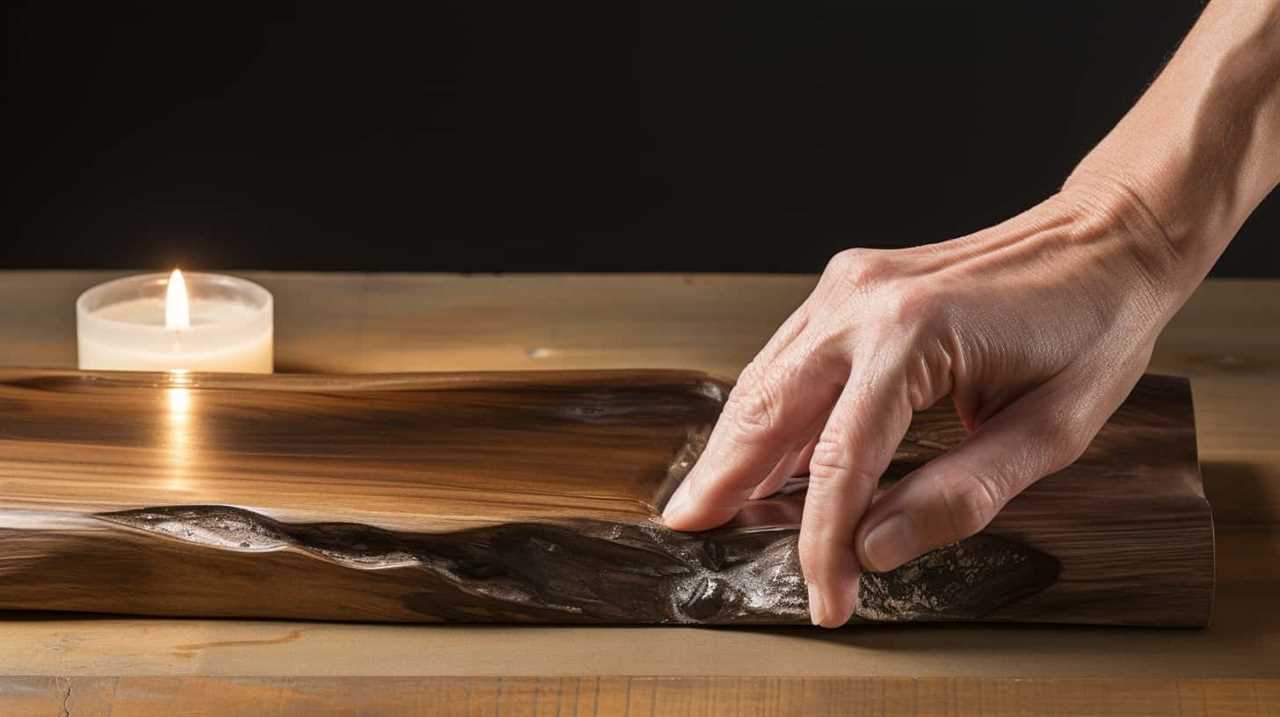
- In Japan, the art of making washi candles involves using traditional methods and materials, such as washi paper and natural oils.
- In India, candles made from ghee, a type of clarified butter, are used in religious ceremonies and rituals.
- In China, the use of beeswax in candle making dates back to ancient times, symbolizing purity and enlightenment.
- In Thailand, intricately carved candles are used in festivals and celebrations, representing prosperity and good fortune.
- In Korea, traditional hanji candles are crafted from mulberry paper, reflecting the country’s rich cultural heritage.
These diverse Asian candle traditions showcase the beauty and cultural significance of candles across the continent.
Candlemaking in the Renaissance
In our exploration of the history of candlemaking, we now delve into the Renaissance period, where candle production saw advancements and innovations.
Renaissance candlemakers played a crucial role in developing new techniques and improving the quality of candles. During this time, the use of beeswax became more prevalent, resulting in candles that burned brighter and longer than those made from tallow.
The Renaissance also saw the introduction of new materials, such as spermaceti, a waxy substance derived from the head of sperm whales, which further improved candle quality.
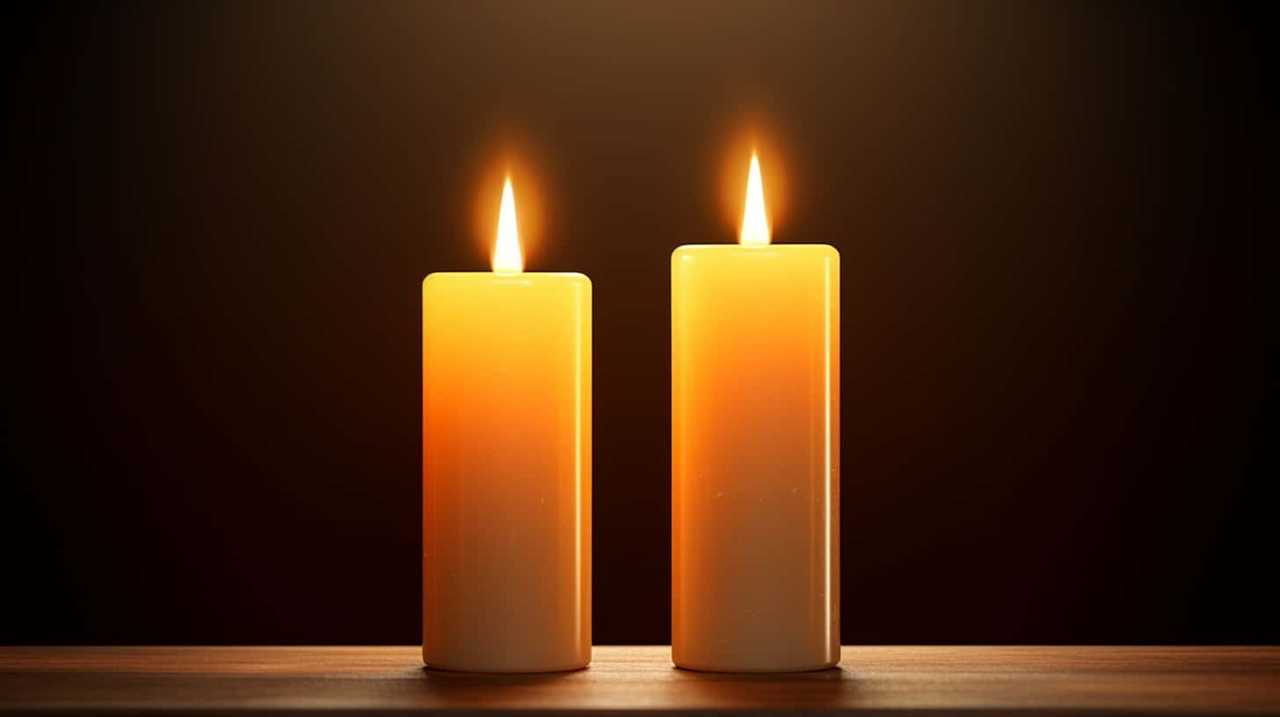
Additionally, candlemakers in the Renaissance period began experimenting with different candle shapes and sizes, leading to the production of decorative and ornate candles.
These advancements in candlemaking techniques paved the way for the industrial revolution, where further innovations would revolutionize the candle industry.
The Influence of the Industrial Revolution
Having witnessed the advancements and innovations in candlemaking during the Renaissance, we were now poised to experience the transformative influence of the Industrial Revolution. The impact of the Industrial Revolution on candle making was profound, revolutionizing the way candles were produced and utilized.
Some key advancements in candle making during this period include:

- Introduction of mechanization: The Industrial Revolution brought about the use of machinery, allowing for mass production of candles.
- Development of new materials: Industrial processes led to the discovery and utilization of materials like paraffin wax, which replaced traditional tallow and beeswax.
- Improved efficiency: With the introduction of steam power, candle making became faster and more efficient.
- Standardization: The Industrial Revolution brought about standardization in candle production, ensuring consistent quality and shape.
- Expansion of markets: The industrial advancements allowed for candles to be produced on a larger scale, making them more affordable and accessible to a wider range of consumers.
These advancements in candle making during the Industrial Revolution laid the foundation for the modern candle industry, shaping the way candles are made and used today.
The Advent of Modern Candle Manufacturing
The industrial revolution had a significant impact on candle manufacturing. Mass production methods were developed, allowing for the efficient and cost-effective production of candles on a large scale. The advent of modern candle production techniques was a direct result of these advancements. Additionally, advancements in candle-making technologies, such as the introduction of wax molds and improved wick materials, further contributed to the evolution of modern candle manufacturing.
Industrial Revolution Impact
During the Industrial Revolution, we revolutionized candle manufacturing with the use of modern techniques and machinery. This period of time brought about significant advancements in industrial revolution technology, which had a profound social impact on the candle manufacturing industry. Here are some key changes that occurred:
- Introduction of automated machinery increased production efficiency and output.
- Development of new manufacturing processes allowed for the creation of candles with consistent quality and longer burn times.
- Utilization of steam power and later electricity replaced manual labor, leading to faster production times.
- Access to cheaper raw materials, such as paraffin wax, made candles more affordable and accessible to the masses.
- The rise of mass production made candles a widely available commodity, contributing to their increased popularity and usage.
These advancements not only transformed the manufacturing process but also shaped the candle industry into what we know today.
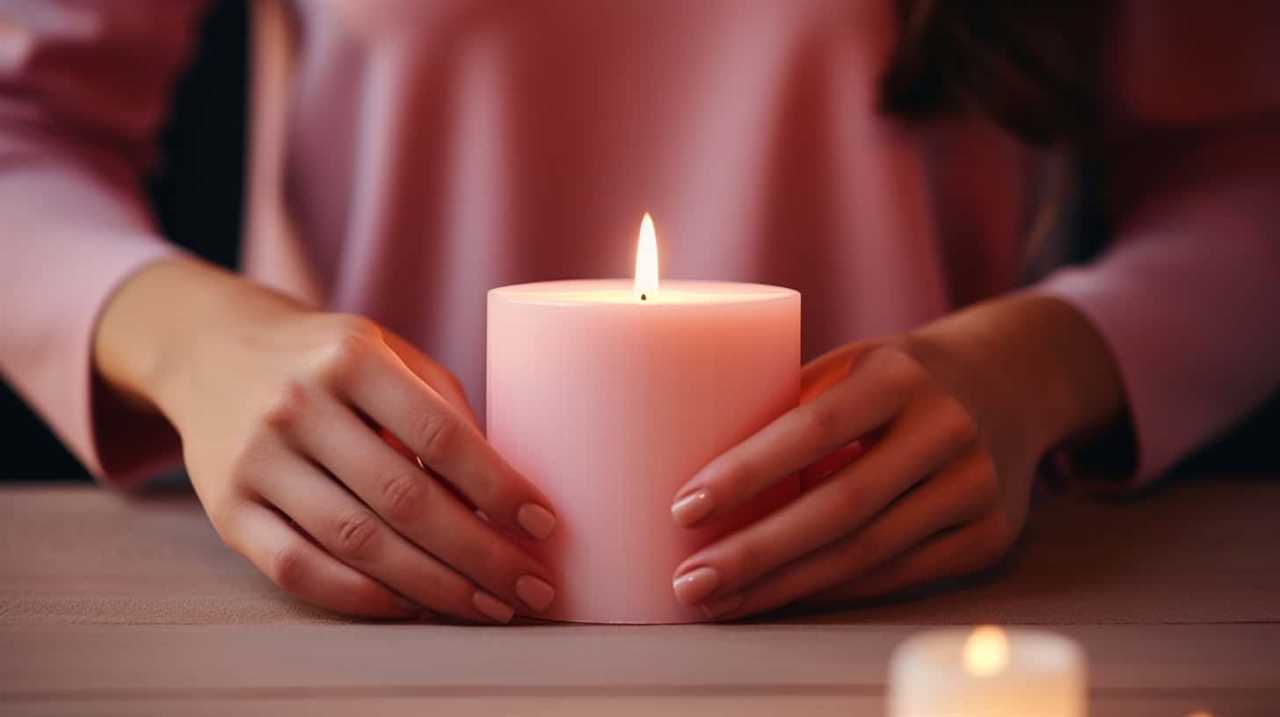
Mass Production Techniques
Our implementation of mass production techniques revolutionized modern candle manufacturing. Prior to these advancements, candles were largely made by hand, limiting production capacity and increasing labor costs. With the introduction of mass production techniques, such as assembly lines and automated machinery, candle production became faster, more efficient, and cost-effective.
Mass production techniques allowed for the streamlining of manufacturing processes, enabling the production of candles on a much larger scale. Modern manufacturing methods, such as the use of molds and automated dipping machines, further increased production efficiency and consistency in candle production.
These advancements in mass production techniques not only led to an increase in the availability of candles but also made them more affordable for consumers. As a result, candles became a common household item and were no longer a luxury reserved for the wealthy.
With the implementation of mass production techniques, the stage was set for further advancements in candle-making, leading to the development of new materials, designs, and scents.

Advancements in Candle-Making
What advancements in candle-making revolutionized modern candle manufacturing?
The advent of modern candle manufacturing has seen significant advancements in candle making techniques. These advancements have revolutionized the industry and transformed the way candles are produced. Here are five key advancements that have played a crucial role in shaping modern candle manufacturing:
- Introduction of mechanized production processes: The use of machinery and automation has greatly increased production efficiency and output.
- Development of new wax formulations: New wax blends and additives have improved the quality, burn time, and scent throw of candles.
- Implementation of advanced wick technologies: Innovative wick designs and materials have enhanced the performance and safety of candles.
- Integration of fragrance and color technologies: Advanced techniques have allowed for better dispersion of fragrances and more vibrant colors in candles.
- Adoption of eco-friendly practices: Environmentally-conscious manufacturing methods and sustainable materials have become increasingly important in modern candle production.
These advancements have propelled the candle-making industry forward, meeting the demands of consumers for high-quality, safe, and sustainable candles.
Innovations in Candle Wax and Wick
We explored various innovations in candle wax and wick to enhance our candle-making process.
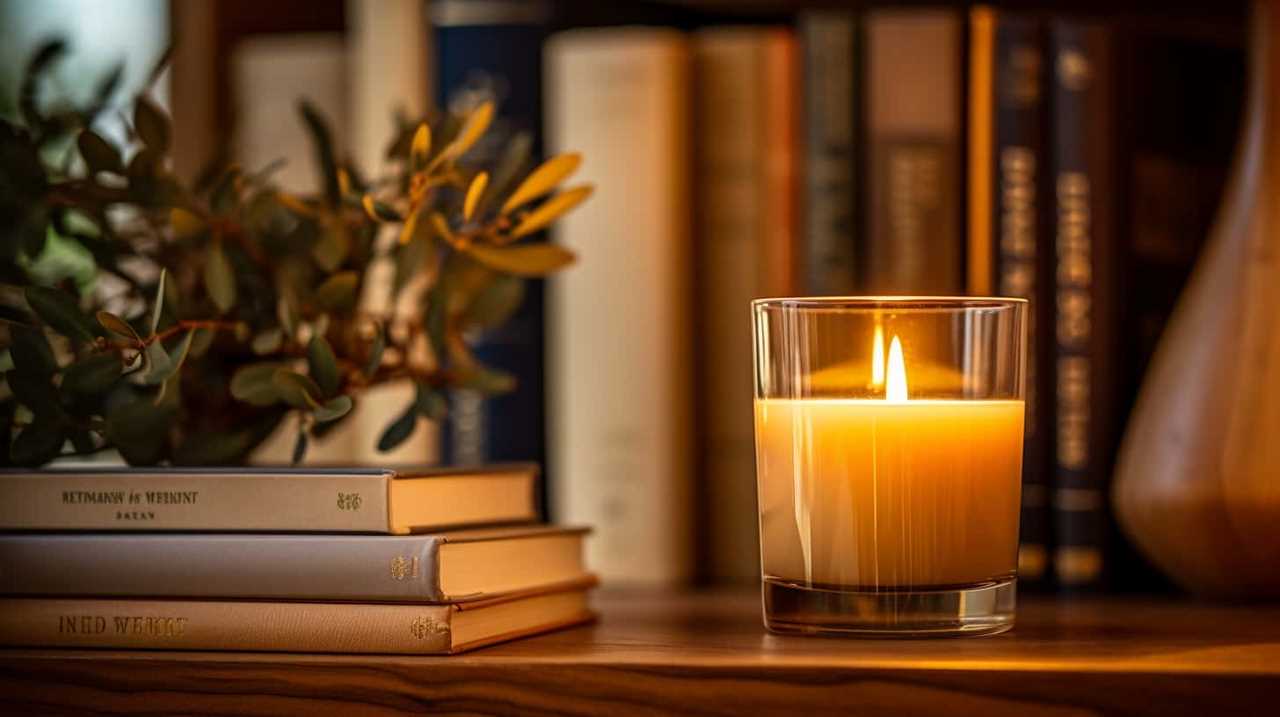
Innovations in candle wax have led to the development of different types of waxes that offer unique properties and benefits. For example, soy wax is a popular alternative to traditional paraffin wax due to its renewable and eco-friendly nature. Beeswax, on the other hand, is known for its natural fragrance and long burn time.
Additionally, advancements in wick technology have improved the performance of candles. For instance, the introduction of cotton wicks has resulted in cleaner and more even burning. Wood wicks have also gained popularity, providing a crackling sound and rustic aesthetic.
These innovations in candle wax and wick have allowed us to create candles that meet the diverse needs and preferences of our customers.
Contemporary Candle Designs and Uses
Frequently, we explore the contemporary designs and uses of candles to meet the diverse needs and preferences of our customers. In today’s market, candle designs have evolved to cater to various styles and purposes. Here are some examples:
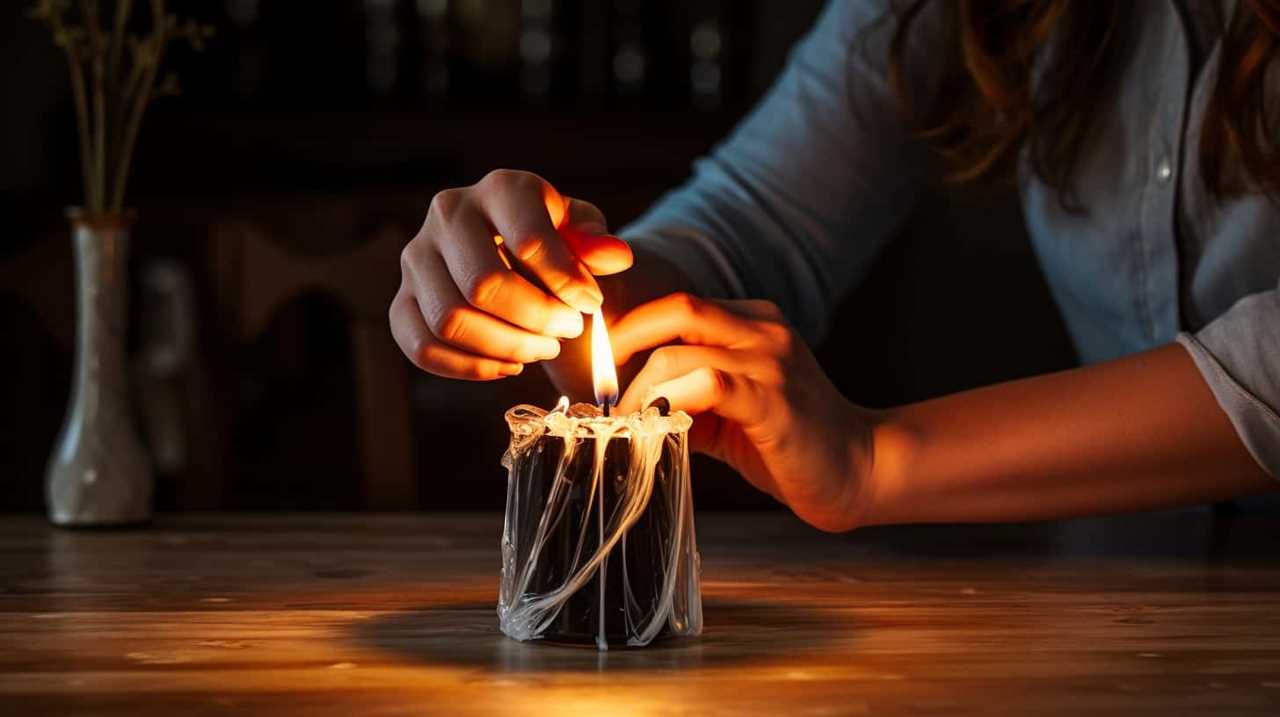
- Decorative Shapes: Candles are now available in unique shapes and sizes, such as geometric figures, animals, and flowers, adding a touch of creativity to any space.
- Multi-Wick Candles: These candles feature multiple wicks, providing a stronger, more even distribution of fragrance and creating a visually striking centerpiece.
- Colorful Layers: Layered candles offer a visually captivating experience with their vibrant colors and distinct scents, creating a beautiful ambiance while burning.
- Eco-friendly Materials: Sustainable candle options are gaining popularity, with manufacturers using natural waxes like soy or beeswax, free from harmful chemicals, and utilizing recycled or biodegradable packaging.
- Specialty Candles: From aromatherapy candles infused with essential oils to insect-repellent candles for outdoor use, specialty candles serve specific purposes, enhancing relaxation or providing practical benefits.
These contemporary designs and uses reflect the ever-evolving nature of candles, offering consumers a wide range of options to suit their preferences while considering sustainability and functionality.
The Legacy of the First Candle Inventor
The impact of the first candle inventor’s legacy can be seen in the countless innovations and advancements in candle design and functionality. Their contributions have left a lasting legacy of importance and historical significance. The first candle inventor paved the way for the development of various types of candles, each with their own unique features and purposes. This legacy has allowed for the creation of candles that are not only aesthetically pleasing but also serve practical functions such as aromatherapy, insect repellent, and emergency lighting. The table below provides a visual representation of some of the key innovations and advancements that have emerged as a result of the first candle inventor’s legacy:
| Candle Type | Design Innovation | Functionality Advancement |
|---|---|---|
| Aromatherapy | Addition of essential oils for fragrance | Promotes relaxation and stress relief |
| Floating | Wax composition for buoyancy | Creates a soothing ambiance |
| LED | Integration of LED lights | Long-lasting and energy-efficient |
| Emergency | Use of slow-burning wicks and durable wax | Provides reliable emergency lighting |
The legacy of the first candle inventor continues to shape the candle industry, inspiring further innovation and enhancing the overall user experience.
Frequently Asked Questions
What Are Some Common Materials Used in Contemporary Candle Making?
In contemporary candle making, common materials include soy wax and beeswax. These ingredients are often used due to their clean-burning properties and eco-friendly nature. They provide a natural and sustainable alternative to traditional paraffin wax.
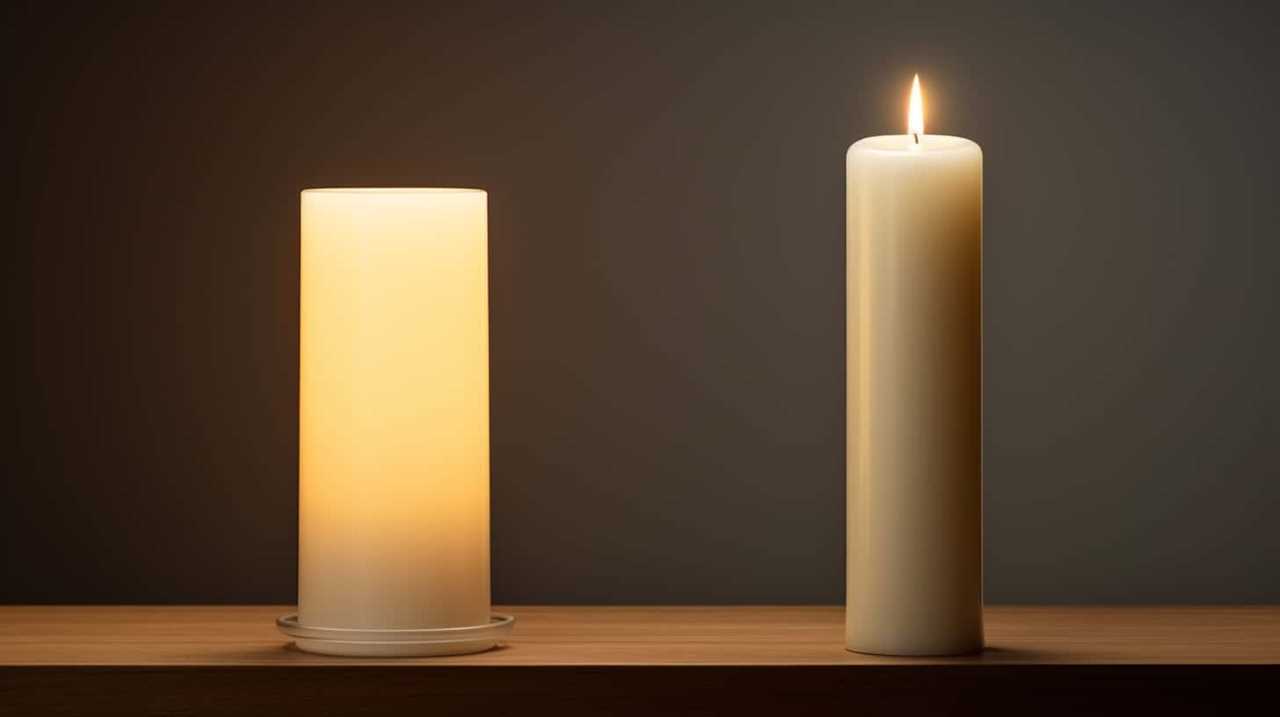
How Did the Industrial Revolution Impact the Production of Candles?
The industrial revolution greatly impacted candle production. Mechanization revolutionized the process, increasing efficiency and output. Candle making guilds adapted to these changes, embracing new technologies and techniques. The role of candles expanded as they became more accessible to the masses.
What Are Some Innovative Designs and Uses of Candles in Modern Times?
Innovative designs and decorative uses have transformed candles in modern times. From intricate shapes and colors to scented and floating varieties, candles are now versatile and visually appealing additions to any space.
How Did Ancient Mesopotamians Contribute to the Development of Candle Making?
Ancient Mesopotamians made significant contributions to candle making techniques. They developed methods to mold and shape candles using tallow and wicks made from reeds, which laid the foundation for future advancements in this ancient art form.
What Were the Early Candle Making Techniques and Materials Used Before the Invention of the First Candle?
Early candle making techniques involved dipping papyrus reeds into animal fat or tallow. Ancient candle materials included beeswax, fish oil, and whale blubber. These methods and materials paved the way for the invention of the first candle.
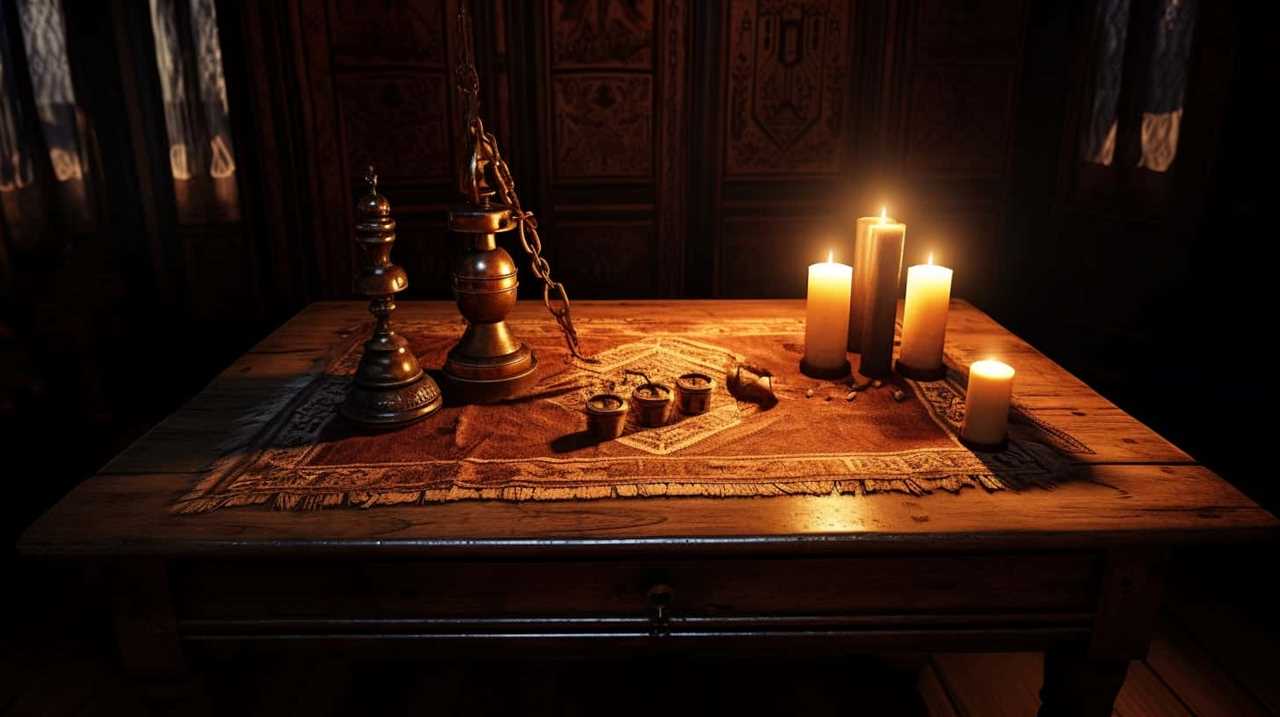
Conclusion
In conclusion, the invention of the first candle is a testament to human ingenuity and resourcefulness.
From the ancient techniques of the Mesopotamians and Egyptians to the advancements in Roman candle development, the art of candle making has evolved over centuries.
Modern innovations in wax and wick have further expanded the possibilities of candle design and use.
Today, candles not only provide illumination but also serve as decorative and aromatic elements in our lives, leaving a lasting legacy from the first candle inventor.

















